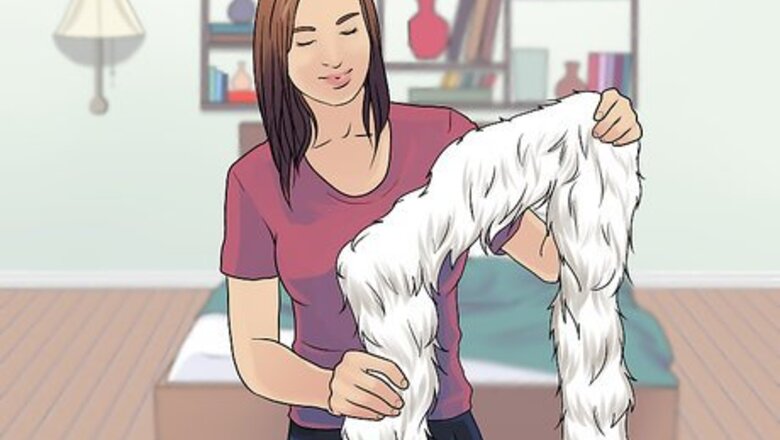
views
Cleaning
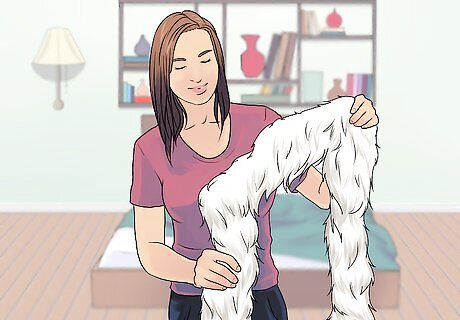
Shake the fur to remove any dirt or debris that has settled onto the coat. Take the coat by the shoulders and, as you would when changing a bedspread, swing the coat out in front of you. You may want to do this outside, or an area of the house that can be easily swept. Once you begin flinging the coat, debris will fly in all directions.
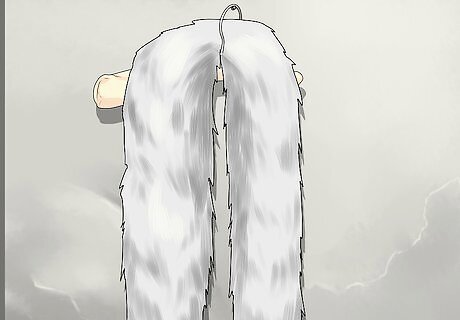
Hang the fur properly. Furs should always be hung on broad, padded hangers to prevent the shoulders from losing their form. Because of the nature of the fur, it can easily be stretched and deformed. Never fold your fur coat.
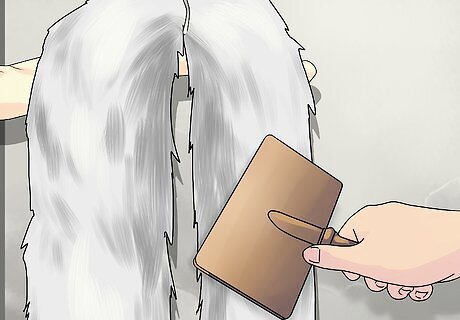
Brush the fur while it hangs. Using a proper fur brush, begin at the top of the coat and begin working your way to the bottom. Be sure to brush the direction of the hair, and to use small and even strokes as you work a small section at a time. Fur brushes have wider spaced teeth and soft edges, which prevent the brush from damaging the skin of the fur. If you do not have a proper fur brush, you can run your fingers through the fur to help clear-out any dirt or debris. Never brush your fur with a "normal" brush. This will damage the coat as the teeth on a normal brush are too fine. Avoid making long strokes along the length of the coat. This can cause the coat to stretch.

Remove any light stains by using a homemade solution. Mix 1 part isopropyl alcohol with 1 part water and apply it directly to the stain. Because fur coats are delicate, you should always avoid using any type of cleaner or solvent, and use as little water as possible.
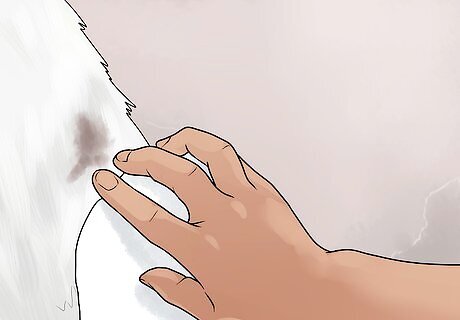
Rub the stain gently with a white cloth and allow to dry. Do not rinse the solution out, instead, place the coat in a well-ventilated area and allow it to dry thoroughly. The alcohol will prevent any water stains from forming on the coat. Never use heat on a fur coat. Heat will damage the coat and lining. Be gentle as you rub and be careful not to stretch the skin. Be sure to use a white cloth or rag or else you may transfer color to the fur.
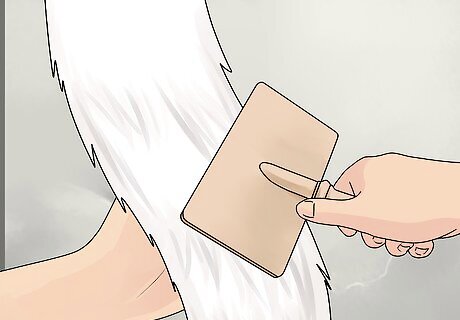
Brush the entire coat with a fur brush once the fur is completely dry. Again, work in the direction of the fur and work small sections at a time.
Conditioning
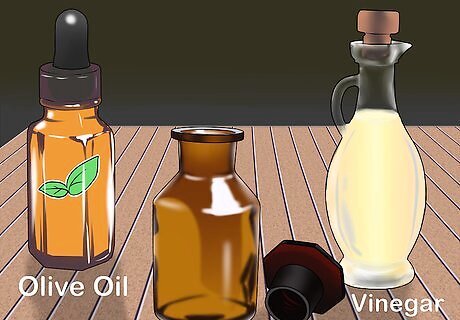
Make a conditioning solution. To do this, mix 1 part vinegar with 2 parts olive oil and mix it together thoroughly. The oil will recondition the skin of the coat and help prevent it from drying out and becoming brittle. Flaxseed oil will work as well.
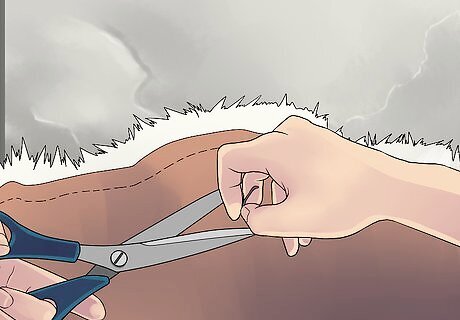
Remove the lining of the coat. You will be applying the conditioner directly to the skin or pelt, so you will need to remove any lining that may be on the inside of the coat. Typically, these linings are made of leather.
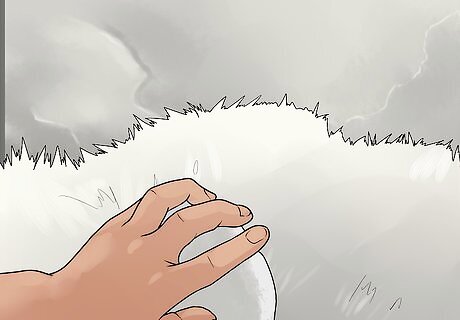
Condition the coat. Using a clean cloth, dab the solution onto the inside of the coat one section at a time, directly to the skin of the fur. Coats that are dry and brittle may need to be conditioned several times. If the skin hasn't been dried out too harshly, you may be able to restore its soft texture. Do not apply to the fur. Make sure the liner is removed.

Massage the skin gently. Continue using a clean cloth to rub the conditioner into the skin. This will help the coat absorb the oil. Do not overwork areas that are particularly dry. Instead, try conditioning the area again once the coat has dried. Coats that have not been conditioned may be stiff and brittle.
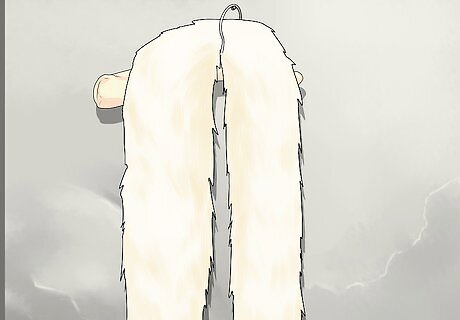
Hang the fur properly and allow to dry. It will take a few days before the vinegar has evaporated and the oil has properly been absorbed by the skin. When the coat no longer smells of vinegar, it is ready to be worn. Remember, furs should always be hung on broad, padded hangers to prevent the shoulders from losing their form.
Removing Odor
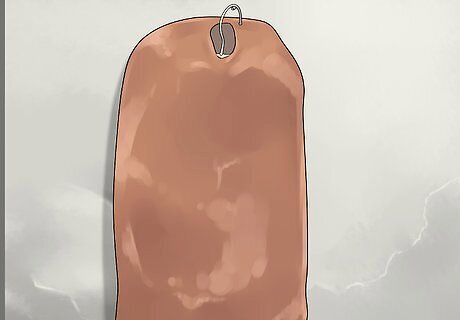
Hang the fur in a vinyl garment bag. Be sure to use a garment bag that can be sealed so that it is as close to airtight as possible. Never use a garment bag when storing your coat for long periods of time. It prevents the skin from breathing. If the skin of a fur coat is not allowed to breathe, it can develop mold or mildew. Remember, furs should always be hung on broad, padded hangers to prevent the shoulders from losing their form.

Fill a small container with ground coffee. The container should be small enough to sit at the bottom of the garment bag; while at the same time, be large enough to hold at least a ½ cup (32 g) of ground coffee. Do not seal the container.

Seal the coffee inside the bag with the fur. Be careful when setting the container at the bottom of the garment bag. Since it really isn't designed to be holding anything but a flat article of clothing, chances are there will be spillage. Simply do your best to minimize the mess. You can put the coffee in a brown paper lunch bag and fold it up, but it will take quite a bit longer for any odor to be absorbed.
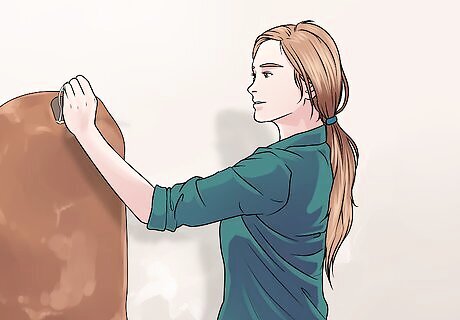
Check the coat after 1 day. Depending on the type of odor that you are trying to eliminate--smoke, mildew, etc.,--it may be gone in as little as 24-hours.
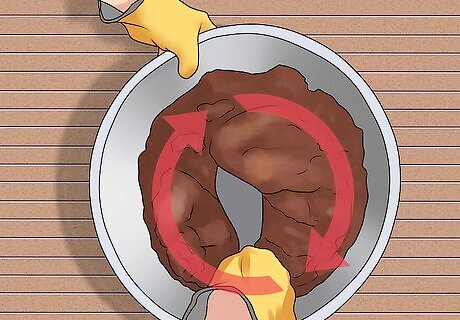
Stir the coffee grounds. If the odor hasn't been removed in 24-hours, simply stir the coffee grounds and allow the coat to continue to sit in the garment bag for another day. Be sure to check daily.

Remove the coat from the garment bag and store properly. Once the odor has been eliminated from your coat, be sure to remove it from the garment bag so that it can breathe and be stored properly. Storage fur coats in areas that are about 45 °F (7 °C). Avoid cedar closets or chests. Cedar oil will harm your fur coat. Avoid heat. Heat will dry out the skin of the fur. Never fold your fur coat.




















Comments
0 comment